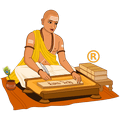























Sunrise05:52
Sunset18:18
Moonrise02:12, Mar 29
Moonset10:53
Shaka Samvat0958 Dhata
Vikram Samvat1093 Bahudhanya
Gujarati Samvat1092 Sarvajit
Amanta MonthChaitra
Purnimanta MonthVaishakha
WeekdaySomawara
PakshaKrishna Paksha
TithiAshtami upto 20:58
NakshatraPurva Ashadha upto 06:16
YogaShiva upto 11:16
KaranaBalava upto 07:44
KaranaKaulava upto 20:58
Pravishte/Gate29
Rahu Kalam07:25 to 08:59
Gulikai Kalam13:38 to 15:11
Yamaganda10:32 to 12:05
Abhijit11:40 to 12:30
Dur Muhurtam12:30 to 13:20
Dur Muhurtam14:59 to 15:49
Amrit Kalam02:04, Mar 29 to 03:51, Mar 29
Varjyam15:16 to 17:04
Notes: All timings are represented in 24-hour notation in local time of Lancaster, United States with DST adjustment (if applicable).
Hours which are past midnight are suffixed with next day date. In Panchang day starts and ends with sunrise.



 Dhanu
Dhanu Mula 19:23
Mula 19:23

 Makara
Makara U Ashadha 25:27+
U Ashadha 25:27+

 Kumbha
Kumbha Dhanishtha 06:43
Dhanishtha 06:43

 Kumbha 28:00+
Kumbha 28:00+ Shatabhisha 08:45
Shatabhisha 08:45

 Meena
Meena U Bhadrapada 11:31
U Bhadrapada 11:31

 Meena 12:17
Meena 12:17 Revati 12:17
Revati 12:17

 Vrishabha
Vrishabha Krittika 12:28
Krittika 12:28

 Mithuna
Mithuna Mrigashira 10:56
Mrigashira 10:56

 Simha
Simha Magha 26:34+
Magha 26:34+

 Simha 06:18
Simha 06:18 U Phalguni 23:07
U Phalguni 23:07

 Kanya
Kanya Hasta 21:52
Hasta 21:52

 Tula
Tula Swati 21:02
Swati 21:02

 Vrishchika
Vrishchika Anuradha 22:57
Anuradha 22:57

 Vrishchika 24:55+
Vrishchika 24:55+ Jyeshtha 24:55+
Jyeshtha 24:55+

 Dhanu
Dhanu Mula 27:25+
Mula 27:25+

 Dhanu
Dhanu P Ashadha
P Ashadha

 Dhanu 13:01
Dhanu 13:01 P Ashadha 06:16
P Ashadha 06:16

 Makara
Makara U Ashadha 09:15
U Ashadha 09:15

 Makara 25:27+
Makara 25:27+ Shravana 12:08
Shravana 12:08

 Kumbha
Kumbha Shatabhisha 16:48
Shatabhisha 16:48In Hindu Calendar, the day starts with local sunrise and ends with next day local sunrise. As sunrise time is different for all cities, Hindu Calendar made for one city is not valid for any other city. Hence it is important to use location based Hindu Calendar, like this website. Further, each Hindu day consists of five elements, which are called angas. These five elements are -
In Hindu Calendar, all five elements together are called Panchang. (In Sanskrit: Panchang = Pancha (five) + Ang (part)). Hence Hindu Calendar which shows all five elements for each day is called Panchang. In South India Panchang is known as Panchangam.
When Hindu Calendar includes Muslims, Sikh, Christian, Buddhist and Jain festivals, including national holidays, it is called as Indian Calendar.